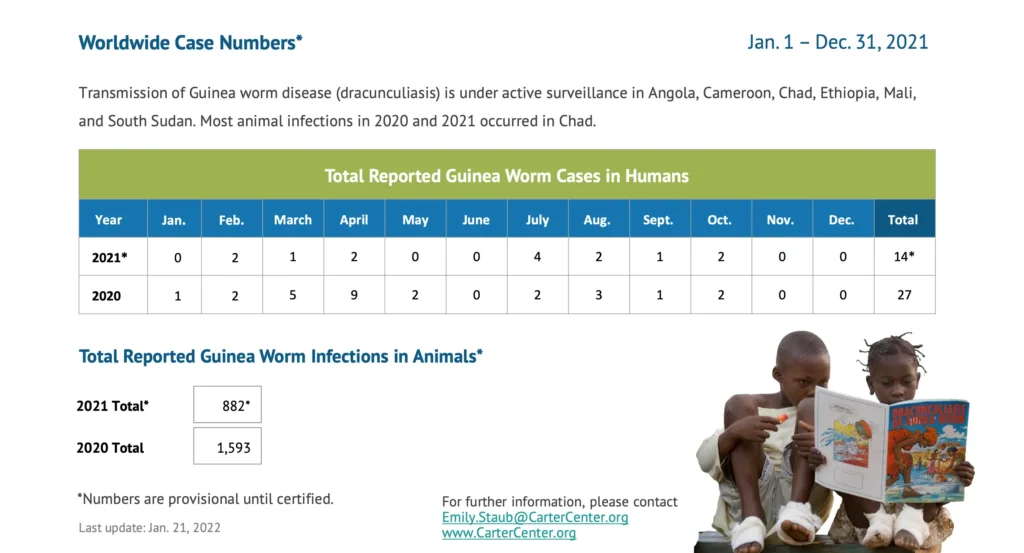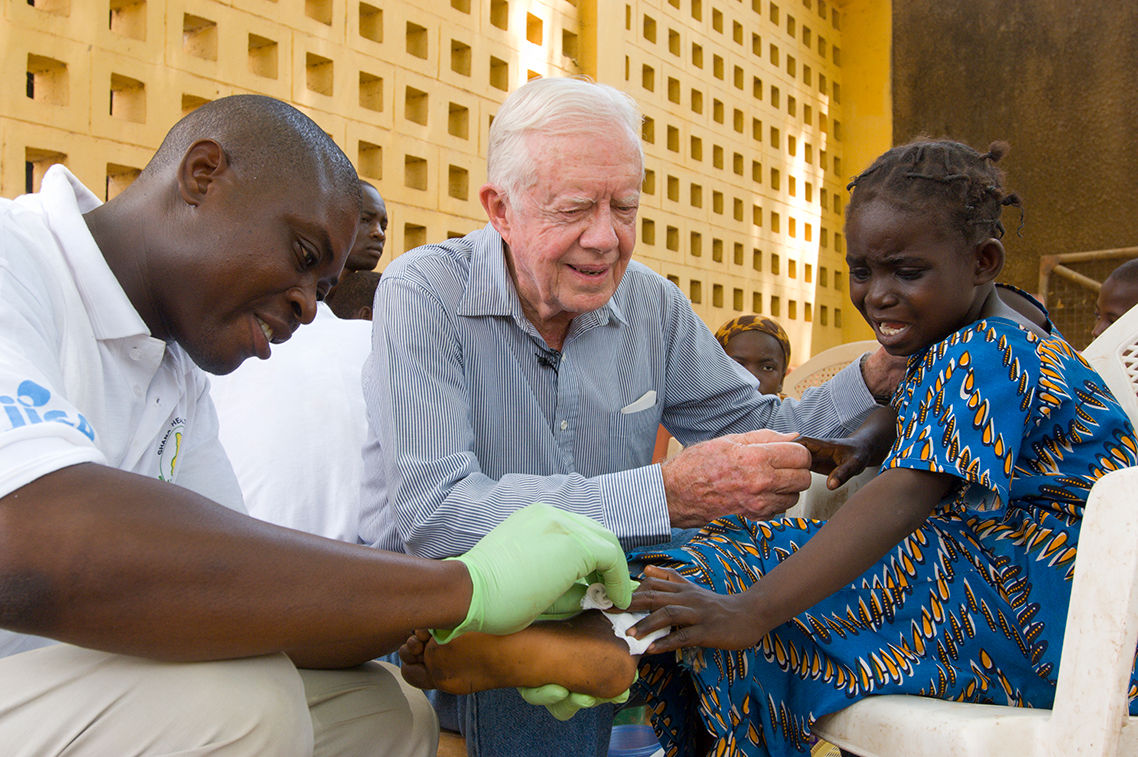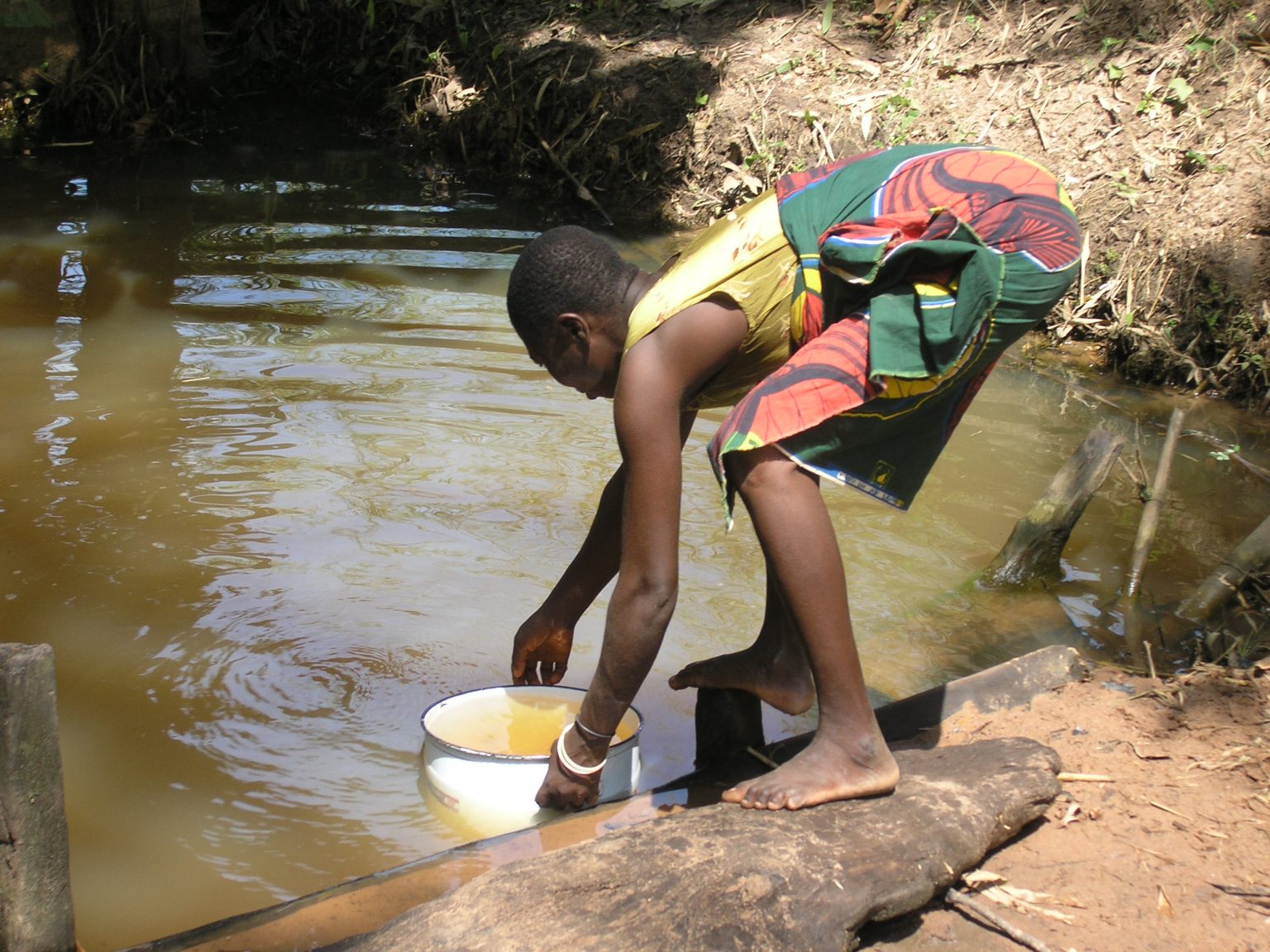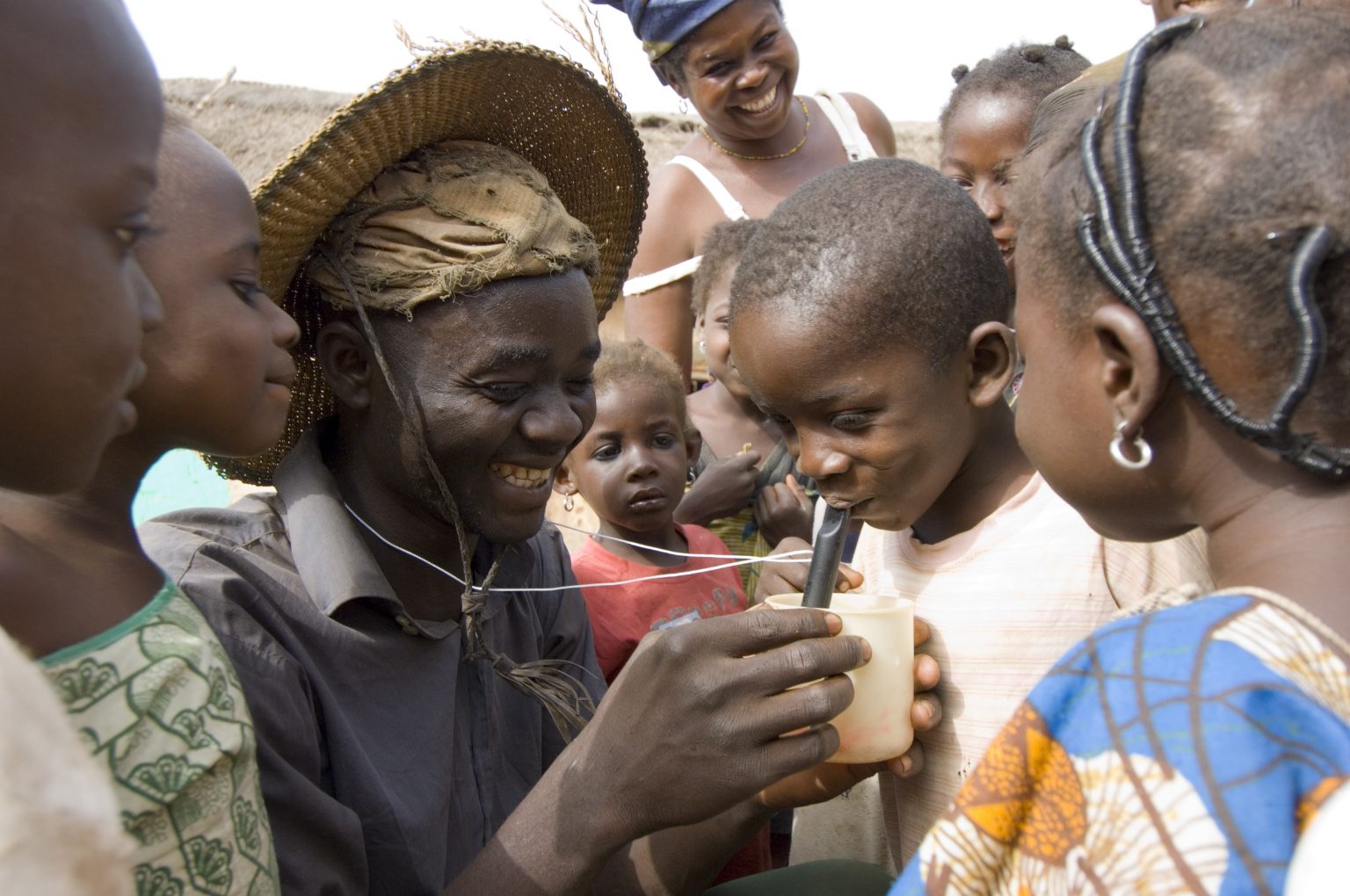Guinea worm disease eradication
A scourge that once infected millions of people is close to being wiped out.
Makliya Mamat / March 2, 2022
I wrote about how potentially powerful we are to speed up the rate of tackling urgent problems that remained in the world. Since 1986, international campaigns to eradicate Guinea worm disease have been led by ministries of health and local communities, the U.S. Centers for Disease Control and Prevention*, the Carter Center*, the World Health Organization*, UNICEF*, and many others.
Guinea worm disease is on the threshold of becoming the second disease, after smallpox, to be eradicated in human history and would be the only disease to be eradicated without the use of medicine or vaccines.
The former US President Jimmy Carter has been working tirelessly on eradication and elimination of diseases, including the Guinea worm disease. Once he said that:” failure to eradicate the disease would be one thing, but that the biggest failure is not to try.” And so, at 97, he is still trying.
Guinea Worm Disease
A person contracts Guinea worm from drinking stagnant water contaminated with microscopic freshwater crustaceans called copepods that are infected with Guinea worm larvae. Once inside the stomach, the copepod breaks down and releases the larvae, which mature and roam inside the abdomen until they find a mate. The male dies and the female continues to grow—reaching lengths of two to three feet. Nine to 12 months later, the worm finally emerges through an excruciating, burning blister. Immersing the wound in water soothes the burn and also causes the worm to release hundreds of thousands of larvae. The cycle begins anew.
Guinea worm disease can incapacitate people for months, leaving them unable to care for themselves, work, grow food for their families or attend school. While there is no medicine to prevent or cure Guinea worm disease, it can be stopped through community interventions and by filtering drinking water.
Strategy
“The last mile is always the most difficult,” says Adam Weiss 15MPH, associate director of The Carter Center Guinea Worm Eradication Program.
Keeping attention focused on the issue is another challenge. “If only 22 people out of more than 7 billion have a disease, it is hard to galvanize the support needed to stay the course,” says Weiss. “It comes down to keeping up the level of financial and human resources, which we will do. We are not going to give up.”
“Decades of work have put the elimination of human Guinea worm disease in sight.”
With just 27 human cases in 2020 and 14 human cases reported in all of 2021 of Guinea worm disease, the Guinea Worm Eradication Program is on the verge of eliminating the disease*. Achieving eradication of Guinea worm disease will require a sustained commitment from donors and partners to bring the number of cases to zero.

Guinea worm is not just a symptom of poverty, it also causes poverty. It keeps people locked in a cycle of poverty. But when we eliminate it from a region, the results are clear that the people go from starvation and hardship to thriving.
I’m grateful to all the people in governments, academia, and non-profits who made the eradication of this disease makes possible.
Undoubtedly, this great success in human history will provide inspiration for people in the community, in the international health community, and in national ministries of health to do more. It will encourage them to target other diseases and alleviate more suffering. And this is one of my biggest hopes.
Search posts by date

Newsletter
- Updates from Makliya Notes will be delivered to your inbox.




